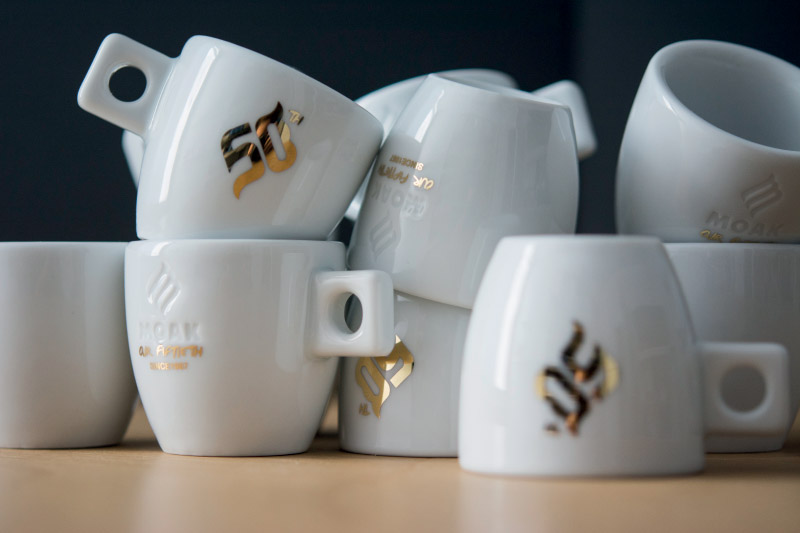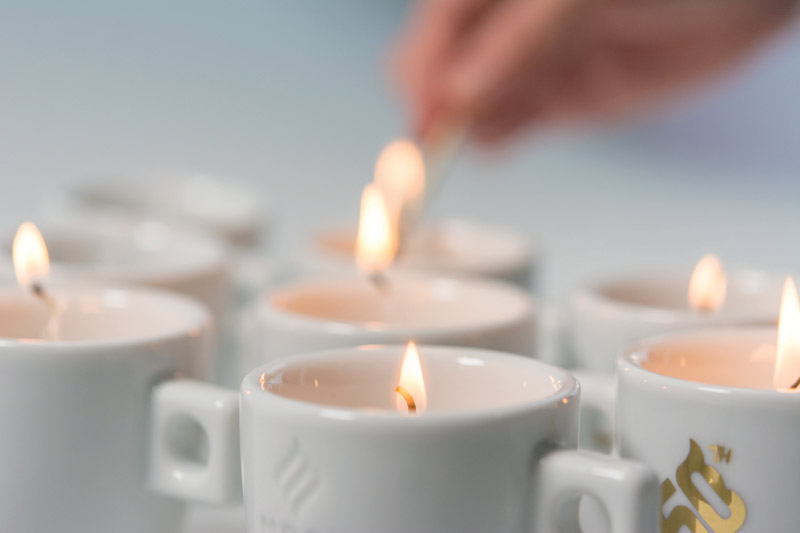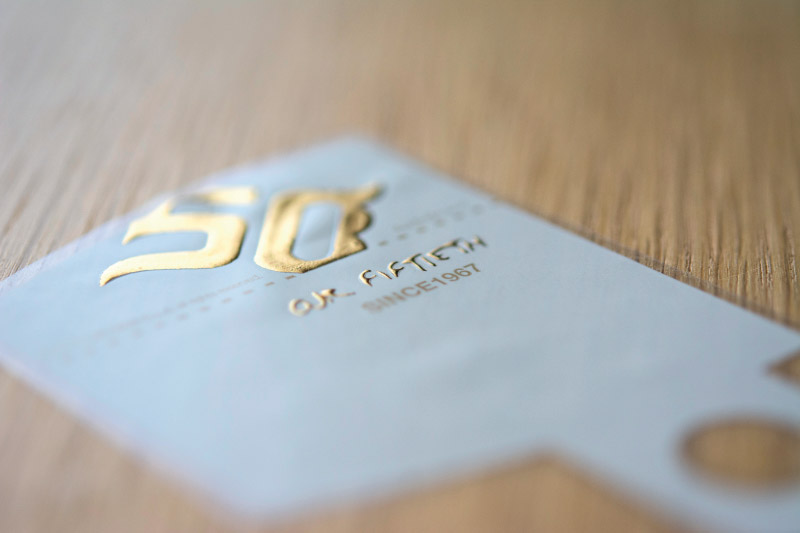We have been writing, telling, illustrating and photographing the extraordinary story of Moak all over the world, for our customers ever, for the ones that belong to be, for whom has joined our team along the years or just for the curious ones that want to know us.
On 2017 Moak’s turning 50 years of business and in order to celebrate it together with our readers, we want to tell our story through the glance and soul of the main protagonists, writing about anecdotes and records of people who have been living this story and who still go on living it. Starting with Giovanni Spadola, who 50 years ago, thanks to his innate entrepreneurship, ambition and endless self-will, fulfilled his dream: to found his own company. Moak has created a new logo in order to celebrate its gold anniversary. It will accompany the entire promotional and advertising activity of the year 2017 and the “gold edition” version of the logo will “dress” the For[me]moak coffee cup. The brand “50”, as well as representing the years that have built the story of roasting, recalls the main features of the company’s logo, with the “M” that brings to mind both the coffee aroma and the company’s name.
The origins: 1967 – 1977
During the postwar people started working early. A lot of young people, left behind the economic crisis, began to invent their job with a big desire to succeed.
Giovanni Spadola had been working since he was very young. Soon after the military service he went to Turin and started working at FIAT, a sort of Eldorado for the young men of Southern Italy.He soon understood that he want to have an impact in the world.“One day – he remembers – one of my chief officers reproached me, using the piedmontese dialect, so that I answered him “Please, speak tricolor!” . In that moment I understood I didn’t want to remain an employee forever”.
It was on February 1967 that he decided to found a company of his own and that his native town was the true Eldorado.
He had got hold his passion for coffee when he went to visit the small coffee – shop of a friend’s father, a place that fascinated him . He thought that one was his dream and it was the right time to make it true. He had very few money, but on October 1967, inside his father’s garage in Modica Alta, he opened his first coffee – shop of 40 square meters, with a Petroncini roaster of 15 kilos and some sacks of green coffee. But the name of the shop was missing. He didn’t like to give the shop his surname, such as the majority of the owners. He felt grateful to his town, Modica, because it had “recall” him back from the North and because it was the place where now he was going to start with his extraordinary adventure. “One day I was reading a book about the history of Modica and I was struck by the word “Mohac”, the Arabian name of my town. So I thought that the name “Moak” was the right choice, because it was both a homage to my town and at the same time the ”acronym” of “moka”.
He couldn’t make do to give a name to his company. He gave it a logo as well, a brand that everyone could recognize such as the one of a high quality coffee.
“I was travelling over the highway “autostrada del Sole” on board of my Fiat 600 in order to buy my first roaster, when I was struck by an advice of Motta, a stylized “M” with the Cathedral of Milan. I imagined the “M” of Moak and the baroque lines recalling the architecture of Modica. As soon as I came back, I outlined the logo that afterwards was impressed on the coffee packages”.
Alone, self – employed, but with the desire to make headway, Giovanni Spadola began to roast his coffee and sell it to all the coffee-shops of the town. Two blends: one for the bar line and another for the family line.
One year later the ordering supplies increased and the roasted coffee produced was 3500 kilos. Giovanni needed help and so he hired his first employee. Working areas became narrow. Outside people exulted in the first Lunar landing. Giovanni Spadola moved to a new site of 100 square meters near his house. With his first income he bought another roaster of 30 kilos and soon after another one which was able to roast 120 kilos of coffee per day. It was his small and intimate Apollo 11, that soon made him take off beyond the boarders of his town towards new markets.



